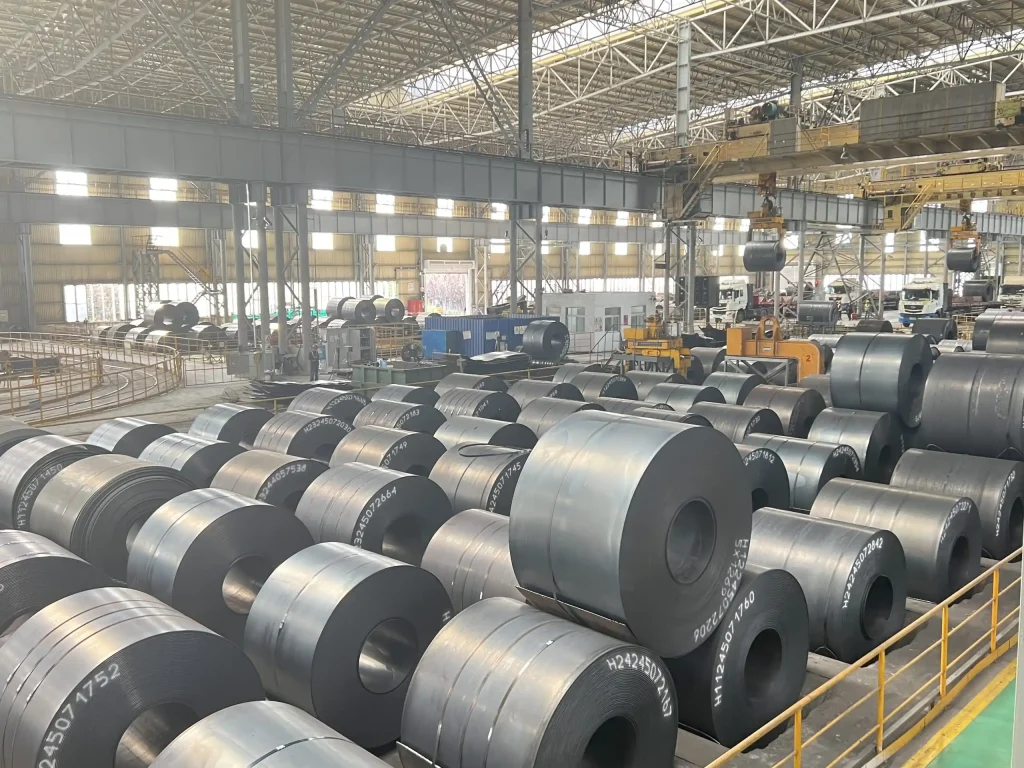Wrapping Your Head Around Carbon Steel
What’s the Deal with Carbon Steel’s Makeup?
Carbon steel’s a jack-of-all-trades, built from iron with a dash of carbon—anywhere from 0.05% to 2.1% by weight, to be exact. That carbon level’s the secret sauce, deciding how this stuff acts in the wild. You might catch a sprinkle of manganese, silicon, or copper in there, jazzing up its game. It’s like mixing a killer smoothie—the right blend makes it pop.
Carbon’s Big Say in Hard or Soft Vibes
Ever wonder what makes steel tough as a brick or bendy like dough? It’s the carbon, man. Low-carbon steel—think 0.25% or less—is soft, easy to shape, like Play-Doh for grown-ups. High-carbon steel, over 0.6%, is a beast, hard and strong but not so flexible. Medium-carbon? It’s the chill middle ground, tough enough but still a bit pliable. More carbon, more grit; less, more give-and-take.
What Cranks Up Carbon Steel’s Hardness?
Heat Treatment’s Magic Touch
Heat treatment’s like a cheat code for carbon steel. Wanna soften it? Anneal it—crank the heat, let it cool slow, and it’s ready to mold like clay. Need it hard? Quench it—blast it hot, dunk it in water or oil, bam, tough as nails but kinda brittle. Then temper it—reheat a smidge, cool it easy—to keep some hardness without the cranky snaps. It’s like tuning a guitar for the perfect note.
Alloying Elements Spicing Things Up
Alloying’s where you toss in some extras to make steel sing. Manganese beefs up toughness, keeps it from wearing out fast. Silicon pumps strength without stealing bendy vibes. Copper’s your rust-blocker, perfect for gnarly environments. These bits mess with carbon in the steel’s guts, shaping how it holds up. It’s like adding hot sauce to your taco—changes the whole flavor.
Where Hard and Soft Carbon Steel Get to Work
Hard Steel’s Heavy-Duty Gigs
Hard carbon steel’s your go-to for jobs needing muscle. Cutting tools, blades, springs, high-strength wires—these bad boys don’t flinch under pressure. High-carbon steel’s in industrial machines, holding firm when the going gets tough. It’s the no-nonsense, take-a-beating champ of the steel world.
Soft Steel’s Chill Uses
Soft carbon steel’s all about playing nice. It’s a cinch to weld or shape, so it’s everywhere in construction—think beams, pipes, rebar. Car bodies, fridges, microwaves? Low-carbon steel’s the star, bending and molding without a fuss. It’s the laid-back buddy who gets along with everyone.
Carbon Steel vs. Its Steel Cousins
Carbon Steel vs. Stainless Steel Throwdown
Carbon steel and stainless steel are like siblings with totally different vibes. Carbon’s iron and carbon, maybe a pinch of manganese or silicon for kicks. No chromium, though—that’s stainless steel’s thing, with at least 10.5% to fend off rust with a shiny shield. Carbon steel’s strong, cheap, but rusts if you don’t watch it. Stainless? It’s the pretty one, corrosion-proof but a pain to weld.
Low-carbon steel’s soft, perfect for pipes or beams. High-carbon’s a hard-hitter for tools or machine parts. Stainless stays shiny, great for kitchens or medical gear, but needs special welding tricks. Carbon steel’s a welder’s pal—no fancy tools needed. Pick your poison: strength on a budget or rust-free bling.
Galvanized Steel vs. Carbon Steel: Who Lasts Longer?
Galvanized steel’s just carbon steel rocking a zinc coat to keep rust at bay. That zinc takes the hit first, so the steel stays safe in wet or rough spots. Plain carbon steel? It’ll rust without a coat or TLC. Galvanized’s your pick for outdoor stuff—fences, roofing—laughing off rain and wind.
Both are tough cookies, but galvanized wins for staying power in harsh conditions. It’s pricier, though, thanks to that zinc-dipping process. Worth the extra bucks? If you want less hassle and a longer life, heck yeah. Carbon steel’s cheaper but needs babysitting to stay rust-free.
Making Carbon Steel Your Own
Tricks for Tweaking Hardness
Wanna make carbon steel just right? Heat treatment’s your jam. Annealing’s like a spa day—heat it, cool it slow, and it’s soft and workable. Quenching’s the tough-guy move: heat it red-hot, dunk it fast in water or oil for max hardness. Too brittle? Temper it—reheat lower, cool easy—to balance grit and give. Alloying’s another ace: manganese for toughness, silicon for strength, copper for rust-proofing. It’s like customizing your ride for the perfect drive.
Why Quality Control’s Non-Negotiable
Making top-notch carbon steel’s no joke. You gotta prep raw materials like a pro, keep gear humming, and stick to the rules. Tiny slips in the mix can mess with strength or bendiness. Smelting’s gotta be clean—cut oxides, manage carbides, or you’re toast. High-tech refining kit weighs alloys to the gram, keeping things tight.
Rolling at crazy-high temps? Watch it to avoid oxidation or chunky grains. Anti-oxidation coatings or slick annealing keep surfaces pretty. Testing’s a must—every batch gets a once-over to hit industry standards. That’s how you churn out steel you can bet on.
Frequently Asked Questions (FAQs)
- What’s the difference between galvanized and plain carbon steel?
Galvanized’s got a zinc coat to fight rust, outlasting regular carbon steel in tough spots. - Can you mess with carbon steel’s hardness?
You bet—quenching, tempering, or alloying with stuff like manganese gets it where you want. - How’s stainless steel different from carbon steel?
Stainless has chromium for rust-proof shine; carbon’s about strength and low cost, no rust protection. - Why’s quality control a big deal for carbon steel?
It keeps strength and bendiness on point by nailing the mix and refining steps.
Got questions on custom steel? Qingdao Sunrise New Material Co., Ltd. for the good stuff!








